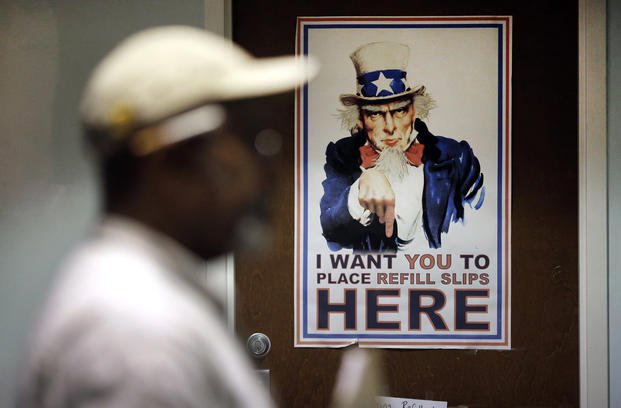The Department of Veterans Affairs has revised its estimated budget shortfall for fiscal 2025, telling Congress on Monday that it now needs $6.6 billion for veterans’ medical care instead of the $12 billion it previously requested.
Based on rising demand for VA medical services and benefits tied to passage of the PACT Act, the VA estimated in July it would need an extra $12 billion for the Veterans Health Administration in 2025 and $3 billion to cover veterans disability compensation and benefits through October.
Congress approved the $3 billion for veterans benefits but did not include the $12 billion in a stopgap bill, known as a continuing resolution, that funded the government after the end of the fiscal year.
Read Next: Steel Company Tied to Deadly Air Force Osprey Crash Faced Defective Parts Lawsuit in 2001
VA Under Secretary for Health Dr. Shereef Elnahal said in a call Monday with reporters that a reconfigured projection means that an extra $6.6 billion, paired with savings of $2.5 billion from 2024, would allow the VA to continue providing medical care and services to a growing patient population and invest $600 million in equipment upgrades and maintenance deferred in 2024 as a cost-cutting measure,
Last week, Elnahal told a House appropriations subcommittee that the $12 billion estimate was too high and the VA was working to revise its numbers based on actual costs and care in 2024.
According to Elnahal, the Veterans Health Administration revamped its estimates of workforce costs after finding that full-time employees each cost the department $3,000 less per year than anticipated, significantly altering the budget shortfall estimates since the VA as a whole has roughly 405,000 employees.
The department also provided more care through VA medical centers, clinics and telehealth, known as the direct care system, than anticipated. Elnahal said the lower-than-expected growth of payments for veterans to go to a non-VA provider care, called community care, helped bolster the savings.
“We offered more VA direct care options consistently to every veteran than we ever have before … and because we have been able to increase the number, even when they qualified for community care, many veterans chose to vote with their feet and remain in VA,” Elnahal said.
Some veterans and advocacy groups have raised concerns that the VA has been delaying or restricting referrals to community care as a savings measure; according to VA Secretary Denis McDonough, roughly 40% of all care provided by the VA to veterans is in the community.
Elnahal said, however, that the eligibility criteria for community care that were set under the first administration of President Donald Trump have not changed and that the VA continues to facilitate referrals.
“What has changed is that we’ve also offered more VA options,” Elnahal said. “And so, in our view, empowering the veteran with more choices for health care is simply the right thing to do, putting the veteran in the driver’s seat to choose where they want to receive their care.”
Lawmakers on both sides of the aisle have expressed frustration with the VA’s budget estimates, especially after the department sent a letter to Congress saying the benefits funding and medical funding shortfalls were not as bad as originally estimated.
The VA did not use the roughly $3 billion it received for benefits payments, but said it still needed the money to ensure that veterans received their disability compensation and pensions on time.
“[It’s] a shift of about a little bit over $20 billion,” Rep. Henry Cuellar, D-Texas, said during a House Appropriations VA subcommittee panel hearing last week. “Not a thousand, not thousands, not millions, but billions. That’s a large amount of discrepancy.”
“This inability to accurately forecast is unacceptable,” subcommittee Chairman Rep. John Carter, R-Texas, said. “The VA’s irresponsibly instilled fear that benefits and pensions would be interrupted for American veterans caused us certain concern.”
Elnahal said the VA is conducting an independent assessment of its budgetary process, adding that he “welcomes the scrutiny” that the department is likely to receive over the new estimate.
“Our budget formulation process does need to improve,” he said Monday.
Elnahal added that the VA needs the funding by Dec. 20, the deadline for a federal budget agreement or another extension to avoid a government shutdown.
“We know that it takes time to hire additional people and build capacity, which is why we need the money now, as opposed to a timepoint much later in the fiscal year when we get closer to consuming the resources that we have,” he said.
Related: VA Backtracks on Budget Shortfall Warning, Angering Lawmakers Who Vow an Investigation
Story Continues
Read the full article here

